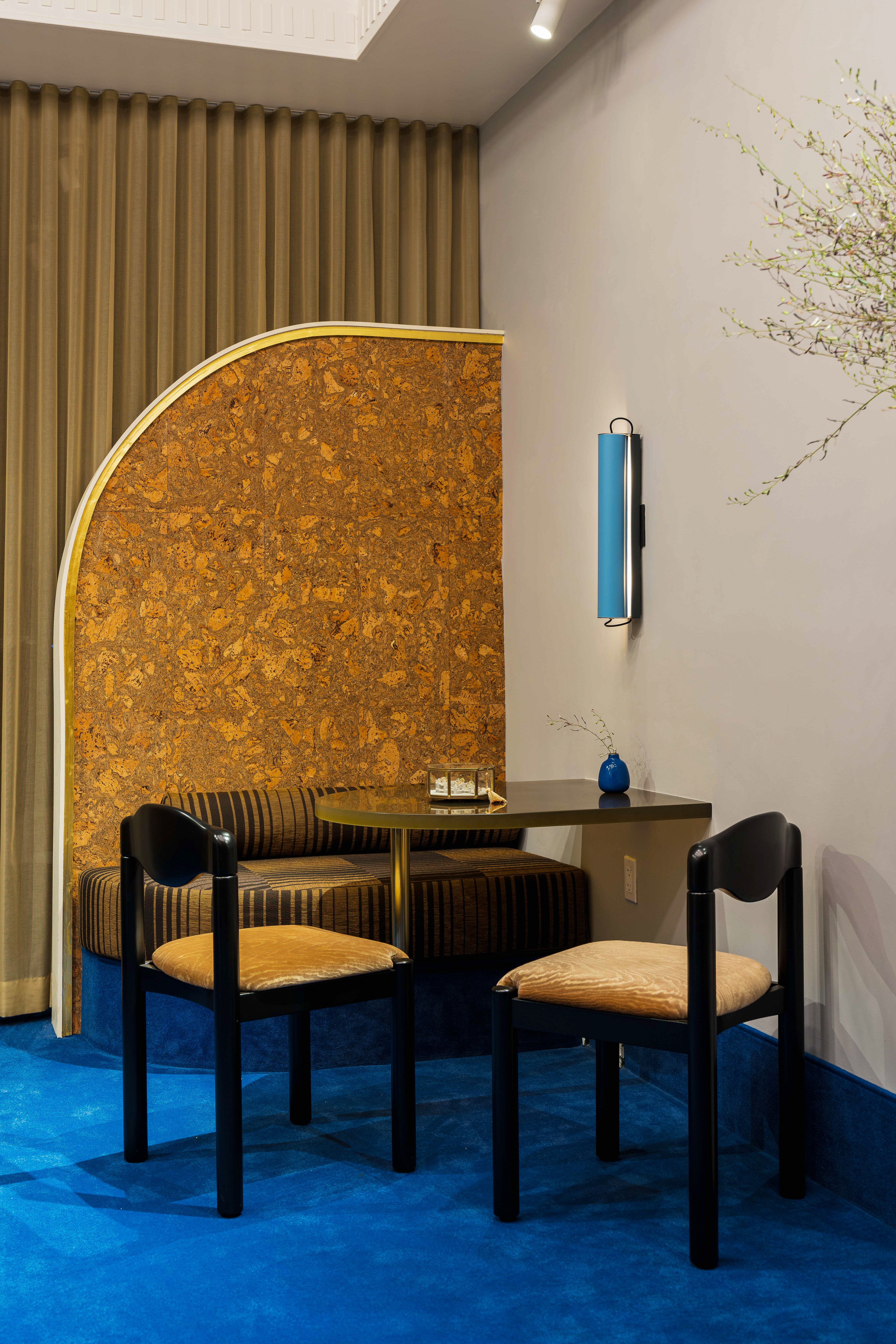After what feels like years of scrolling through endless neutrals, there’s a bold shift happening in the world of interior design. Suddenly, there are patterned lampshades and printed wall coverings. Tactile art and richly-hued seats.
Maximalist color combos and vivid texture. Everywhere you look, it seems that our decor is once again filled with expressive saturation, eye-popping scale, and renewed vibrancy. While some might shy away from adding permanent pigment or pattern, others are going all-in and grounding their spaces in color.

And not just in the form of area rugs that can quickly be swapped out or moved to another room—but in fully-committed, wall-to-wall carpet in singular shades like bold red, slime green, cobalt blue, and beyond. Is it a gamble? Perhaps. But, it’s also an undeniable statement.
And, when done in a way that’s straightforward and cohesive, it can anchor a room in surprisingly unfussy—yet dramatic—expression. Daphne Javitch , an integrative wellness coach and founder of Doing Well , didn’t think twice when installing cherry red wall-to-wall carpet in her Los Angeles home. “My husband Pali Xisto Cornelsen is an interior designer and has been working with vibrant colored flooring for a while now,” she shares.
“He created a beautiful bedroom for our dear friend, Laila Gohar , several years back with a tatami mat-inspired floor in a pure red textile instead of the traditional weave. When we moved into this Californian, mid-century house, we knew our living room would fully come to life with red, wall-to-wall carpet and matching window finishings.” For Javitch, the carpet added mystique to the room.
“A red carpet feels sexy—plus, I love when simplicity is bold,” she says. Colored carpet has also been a frequent choice for AD100 designer Lauren Geremia , who has used it in several recent projects—including the newly opened San Francisco-based fine jewelry shop No.3 .
“The cobalt blue was a constant in the original design, and we really doubled-down,” Geremia shares. “I wanted something soft and intimate that also felt luxurious and clean. We also used colored carpet in a recent kids’ space; it was fun and tactile and they loved the green.
” Why the sudden reason for this resurgence? It’s part nostalgia, part functionality—and perhaps, part boredom, too. Monika McCommon, SVP of brand at Stark , suggests people are fatigued with muted carpeting. “During the pandemic, we saw the rise of neutrals,” she shares.
“Now that this time is behind us, we’re seeing the return of color in the home influenced by fashion, art, and travel.” Geremia agrees, “I think people want to play more with color. Also, many of my clients spend lots of time on the floor with kids or love lower furniture.
It’s both stimulating and cozy to use carpet,” she says. Geremia also notes that it could be a collective return to old-school aesthetics. “I think it is the retro inspiration creeping back in as we borrow ideas from eras with strong color use, like the ’ 70s and ’80s.
” When exploring the history of colored carpet, it’s essential to delve into its textured beginnings. The concept of carpeting an entire room started gaining traction in the ’20s and ’30s. Initially, carpets were pieced together by hand from smaller sections, but as manufacturing technology advanced, they were produced in larger rolls, making installation much easier.
By the ’60s and ’70s, wall-to-wall carpeting had become a standard feature in most American homes, often showcasing hues like mustard, plum, and mossy green. Kim Hastreiter , journalist and co-founder of Paper , is known for incorporating green carpet in all of her homes as a throwback to her first NYC apartment. “My first apartment after college, in 1977, was a gnarly $140-a-month, fifth-floor walkup.
It was a one-bedroom tenement in Soho with a tub in the kitchen,” she recalls. “I had no money to fix it up, so I scrubbed every inch of it, painted it white, and carpeted the entire thing—including the kitchen and bathroom in bright grass green astroturf which was much, much cheaper than carpeting.” “For 45 years now, I have always incorporated grass green carpet into my homes.
When I got sick of only green in the ’90s, I added bright orange carpet to my repertoire. I’d carpet my bedroom green and my studio orange and when it began to look shabby I’d switch them,” she shares. When asked how to select the right color for carpeting, Britt Zunino of Studio DB suggests being mindful of tones.
“The entire palette of the room should be considered when installing colored carpeting,” she shares. “It’s successful when the carpet is tonal and the entire room—including the ceiling—has a wash of color. I love making a bold statement and leaning into a rich color on the floor.
” Designer Zoe Feldman agrees that colored carpet creates a unique foundation. “Carpets can enhance the jewel-box feel of a space and add another layer of interest,” she shares. And when selecting a carpet, she suggests opting for a low-pile iteration: “We typically go for a low-pile option—no shag!” Photographer Anna-Alexia Basile , who recently installed a colored carpet in two of her San Francisco home’s rooms, reminds us that it doesn’t always need to be a forever thing.
“Carpets don’t have to be permanent. We lightly taped down the part of the carpet with double-sided tape and then put transition strips at each threshold,” she explains of her process. “Colored carpet can ignite the life of a room and doesn't need to read ‘loud.
’ It can act as a neutral as you take in the rest of the space.” Designer Tali Roth shares this perspective—and wholeheartedly embraces the move away from beige floor coverings. "In a world where we’re all striving to infuse our spaces with individuality, the days of carpeted rooms draped in bland oatmeal or gray wool are hopefully behind us.
”.


















